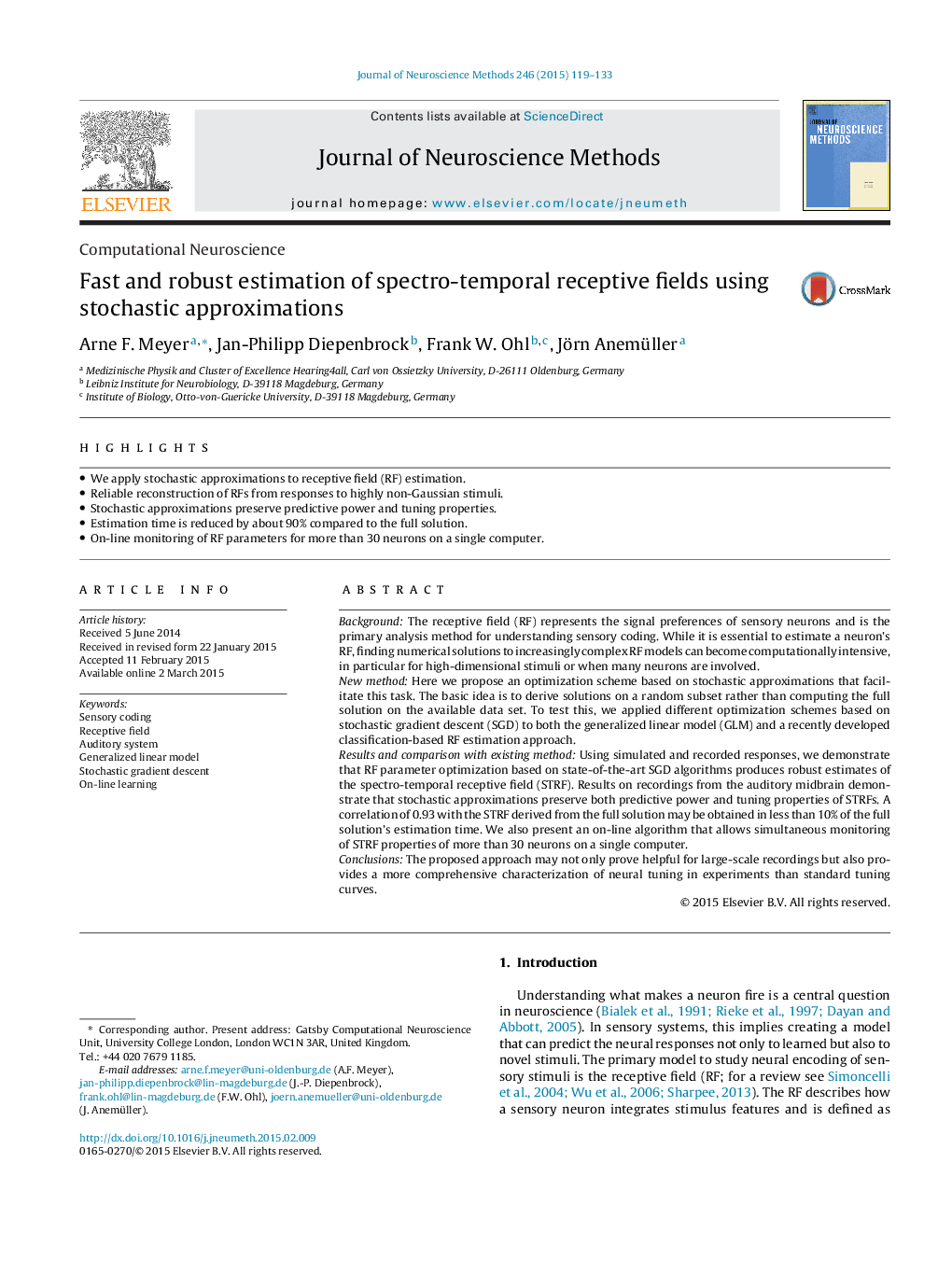| کد مقاله | کد نشریه | سال انتشار | مقاله انگلیسی | نسخه تمام متن |
|---|---|---|---|---|
| 4334928 | 1614623 | 2015 | 15 صفحه PDF | دانلود رایگان |
• We apply stochastic approximations to receptive field (RF) estimation.
• Reliable reconstruction of RFs from responses to highly non-Gaussian stimuli.
• Stochastic approximations preserve predictive power and tuning properties.
• Estimation time is reduced by about 90% compared to the full solution.
• On-line monitoring of RF parameters for more than 30 neurons on a single computer.
BackgroundThe receptive field (RF) represents the signal preferences of sensory neurons and is the primary analysis method for understanding sensory coding. While it is essential to estimate a neuron's RF, finding numerical solutions to increasingly complex RF models can become computationally intensive, in particular for high-dimensional stimuli or when many neurons are involved.New methodHere we propose an optimization scheme based on stochastic approximations that facilitate this task. The basic idea is to derive solutions on a random subset rather than computing the full solution on the available data set. To test this, we applied different optimization schemes based on stochastic gradient descent (SGD) to both the generalized linear model (GLM) and a recently developed classification-based RF estimation approach.Results and comparison with existing methodUsing simulated and recorded responses, we demonstrate that RF parameter optimization based on state-of-the-art SGD algorithms produces robust estimates of the spectro-temporal receptive field (STRF). Results on recordings from the auditory midbrain demonstrate that stochastic approximations preserve both predictive power and tuning properties of STRFs. A correlation of 0.93 with the STRF derived from the full solution may be obtained in less than 10% of the full solution's estimation time. We also present an on-line algorithm that allows simultaneous monitoring of STRF properties of more than 30 neurons on a single computer.ConclusionsThe proposed approach may not only prove helpful for large-scale recordings but also provides a more comprehensive characterization of neural tuning in experiments than standard tuning curves.
Journal: Journal of Neuroscience Methods - Volume 246, 15 May 2015, Pages 119–133
